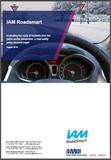Research reports
As well as issuing road safety policy statements and working with government and the media, the IAM RoadSmart Policy & Research Team undertake research into driver behaviour and a range of other road safety issues. Following are a sample of our recent published reports.
Evaluating the costs of incidents from the public sector perspective
The purpose of this research was to facilitate a discussion beyond the Department for Transport, with the aim of developing focused policy actions based on the savings government departments could make by prioritising road safety in their day-to-day work.
The use of casualty costs is well known and a new figure is generated every year based on a model developed in the 1990’s. In 2015 the cost of each casualty was estimated at £1.7million with the total of all incidents placed at £35 billion. The biggest element in this figure is the cost to the individuals involved, chiefly loved ones. This human cost factor has always been based on how much those relatives would be willing to pay to avoid the incident. By stripping this out the new report can show exactly which costs fall on the public purse.
The total costs to public services identified by the research were as follows:
- Young drivers, £1.3 billion (£1.1 Million per fatality)
- Motorcyclists, £1.1 billion (£800,000 per fatality)
- People driving for work, £702 million (£700,000 per fatality)
- Older drivers, £63 million. (£10,000 per fatality)
Breaking this down to individual government departments shows that reducing young driver crashes completely could result in savings of £227 million to the Department for Work and Pensions – a result of not needing to pay out long term benefits to injured drivers. In turn, the NHS and the police costs would be cut by £241 million. For motorcycling the DWP benefits savings are up to £219 million and NHS and police costs could be reduced by up to £162 million. For older drivers the costs are actually higher for serious injuries at £58,000 but the ever increasing numbers of older people mean that their costs to government departments cannot be ignored.



